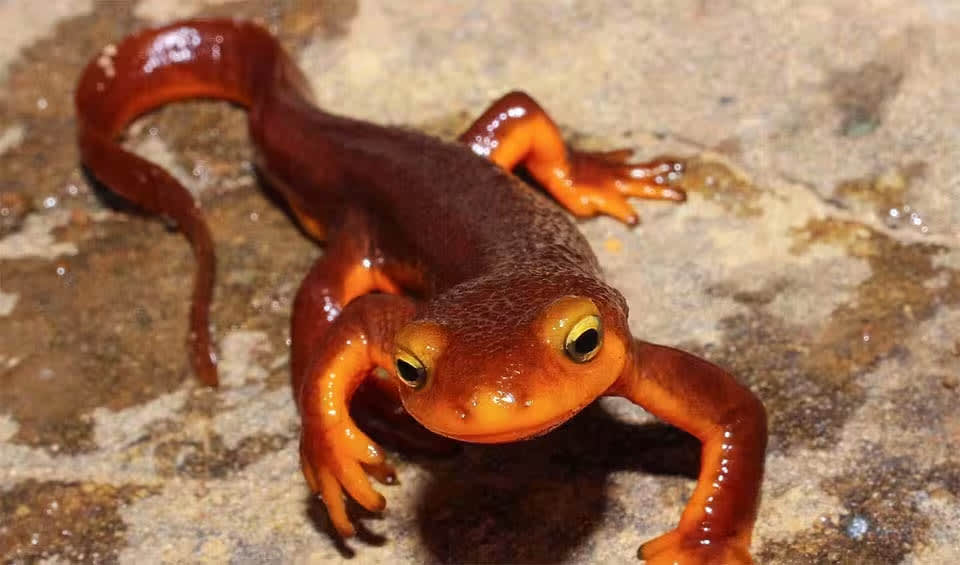The California newt is known for its sturdy build and distinctive rough, grainy skin that sets it apart from its sleeker amphibian cousins. Native to California, this newt has adapted to various habitats across the state, from the coastal ranges to the Sierra Nevada, and is especially prevalent in the Santa Monica Mountains. Its size, which can reach up to 8 inches in length, makes it the largest native salamander species in this region.
One of the most intriguing aspects of the California newt is its defense mechanism. The skin of these creatures secretes a potent neurotoxin known as tetrodotoxin, the same toxin found in pufferfish and harlequin frogs. This toxin is highly effective at deterring predators; even a small amount can be lethal. Despite the danger they pose, California newts have a subdued demeanor and are not aggressive toward humans unless handled inappropriately.
Their diet reflects their role as important predators in the ecosystem. Adult California newts have a varied diet, including sow bugs, earthworms, snails, and slugs. These food sources are vital not only for the sustenance of individual newts but also for controlling the populations of these invertebrates in their habitats.
However, the California newt is not just a predator; it can also display cannibalistic tendencies. It has been observed that adult newts may consume their own eggs and larvae. This behavior might be a natural population control mechanism or a response to environmental stresses such as food scarcity.
Distribution
 United States
United StatesAnything we've missed?
Help us improve this page by suggesting edits. Glory never dies!
Suggest an editGet to know me
Terrestrial / Aquatic
Altricial / Precocial
Polygamous / Monogamous
Dimorphic (size) / Monomorphic
Active: Diurnal / Nocturnal
Social behavior: Solitary / Pack / Herd
Diet: Carnivore / Herbivore / Omnivore / Piscivorous / Insectivore
Migratory: Yes / No
Domesticated: Yes / No
Dangerous: Yes / No





